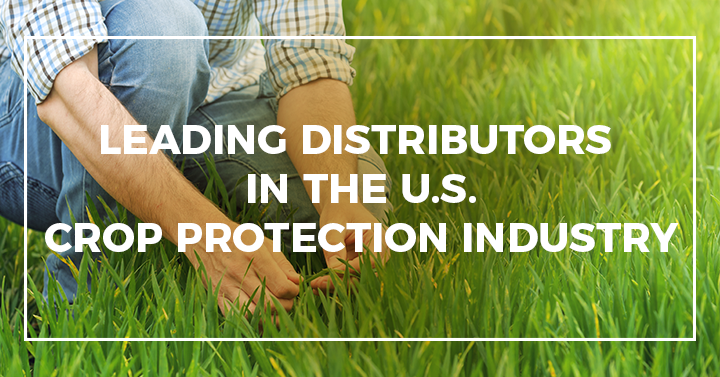Crop protection distributor sales volumes in 2019 are estimated to be down by approximately 3.8%, with margins down by about 1%. Volumes are based on the cost of sales level and percent change compared to estimated 2018 sales. Wet weather in much of the row crop markets resulted in nearly 6% less planted acres, or 15.8 million fewer acres treated. Factors that drove the 2019 crop protection market at the distributor level include the trade war with China, which impacted commodity prices and influenced farmer selection of crops to plant; new technology that influences seed selection; and a decrease of major planted crop acreage.
The U.S. crop protection chemical industry saw quite a few trends in 2019; among them was the identifying of efficiencies within the distributor/retailer business, adopting new streams of revenue, and the management of regulations by the U.S. government and individual states.
In terms of major distributor performance, there was an increase of 0.3% in 2019. Enkoz surpassed Nutrien Ag’s (formerly Agrium) CPS business and is now the largest buying entity of crop protection chemicals. West Central had the biggest increase in revenue of all Tenkoz members due to increased sales to CHS. CHS purchased West Central in 2019 and switched a majority of crop protection purchases from Winfield to West Central. The Tenkoz member that had the largest drop in revenue was MFA. Rain and flooding was the main contributor to the decline.
Online companies such as Farm Business Network (FBN), CommoditAG, AgVend, and Reichmann saw growth again in 2019. Industry leaders list this as secondary channel business. Generic and basic brand products are being funneled through these companies via Ag chemical distributors, generic suppliers, and brokers. This business is projected to grow as farmers seek lower-cost alternatives. Generic suppliers get a higher share of the volume through online businesses.
The year 2020 brought a whole new meaning to the phrase “These are crazy times,” which was the most common way everyone in the agricultural supply chain described the situation when asked about the COVID-19 pandemic. The longer-term economic impact of COVID-19 is yet to be seen. However, many problems are already surfacing. Read our recent blog Deciphering the Short- and Long-Term Impacts of COVID-19 on the Agricultural Industry.
Many industry participants, particularly some of those in commodity groups such as strawberry and tomato, are particularly concerned. Labor is always a concern for strawberries and tomatoes. If the workers get sick, they won’t be able to harvest. The shutdown of restaurants has also impacted demand.
Moreover, given the current situation, farm operations have requested their suppliers communicate by phone and or computer. Representatives are spending a great deal of their time on conference calls and Skype since personal contact is not possible. They are shut down on overnight travel accommodations and mostly working out of their homes, due to the obvious health concerns.
To gain in-depth insights on this market, subscribe to our Leading Distributors in the U.S. Crop Protection Industry: A Strategic Market Analysis report.

